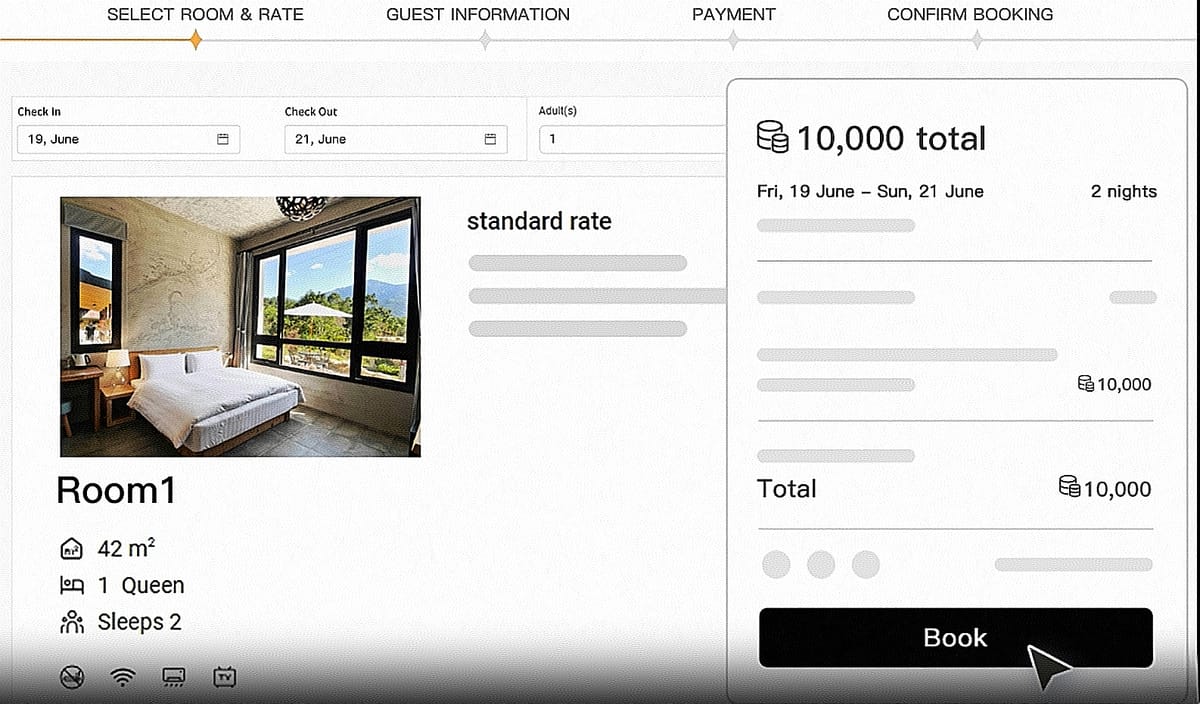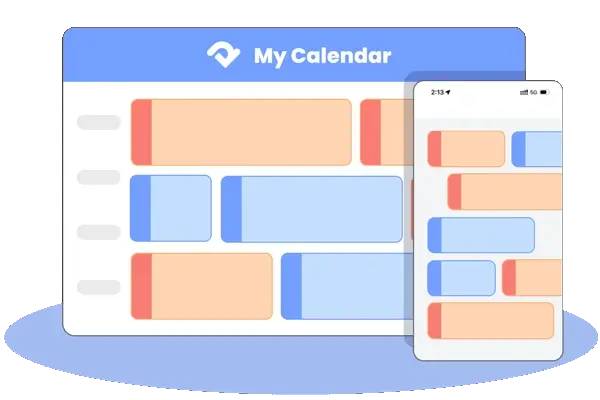Introduction
In the hospitality industry, whether it is a hotel, B&B or vacation rental company, no matter the size, there is a common goal: to increase occupancy and increase profits. The core of this goal lies in whether a reasonable price plan can be formulated. It can not only increase occupancy and profitability but also optimize the guest experience and help operators gain a foothold in the fierce competition.
As the hotel industry market continues to change, it has become particularly important to formulate flexible and strategic rate plans. This guide can help all hotel property owners or managers understand different hotel rates and make appropriate rate plans.
What Is a Rate Plan?
To put it simply, the rate plan is the pricing rule used by the hotel when selling rooms. No matter which channel it is sold through, it must be based on this. It not only contains specific prices, but also comes with a lot of additional conditions, such as whether meals are included, whether they can be canceled, the minimum number of days required, and the pricing differences between different channels.
Take the same room, for example, two guests may spend different amounts. One person booked a non-refundable room, which is cheaper; the other person booked a room with breakfast, which is slightly more expensive but can be canceled flexibly. As you can see, each price plan is actually specially prepared for a certain type of guest, and each has its own uses.
Why Rate Plans Matter
How to set the rate has a great impact on the hotel business, mainly in three aspects:
- Increasing profit: A more flexible price can easily attract different types of guests, and can be adjusted in the peak season and off-season, and can also change with the market changes, so it is easier to make money.
- Occupied rooms: Smart room rate setting can attract more guests in the off-season (without causing the average room rate to drop too much), so that the rooms are not empty as much as possible.
- Satisfied guests: Give guests more choices, whether they are budget-conscious tourists or business travelers who want to save trouble, they can find the right one, so that they will be more satisfied with their stay.
Types of Hotel Rate Plans
There is no one-size-fits-all approach. Different types of rate plans serve different purposes. Below are the most common rate plan categories used across hotels and short-term rentals:
- Rack Rate
The standard price of a hotel room is the full price without any discount. Rack rate is usually not sold directly and is the basis for discounts or negotiated prices. - BAR (Best Available Rate)
The most flexible and frequently updated rate. It reflects real-time demand and typically offers flexible cancellation policies. BAR is the foundation for most pricing strategies. - Non-Refundable Rate
A discounted rate that cannot be canceled or refunded. It offers better value to guests who are sure of their plans, while giving the hotel guaranteed revenue. - Advance Purchase Rate
Encourage guests to book early, usually cheaper, but with stricter conditions, such as non-refundable deposits. - Length of Stay Rate Plans
The price will be adjusted according to the number of days you stay. For example, the common "stay 3 nights and pay for 2 nights", or discounts for staying more than 7 nights. - Meal Inclusive Rate Plans
The room rate includes breakfast, half board (breakfast + dinner) or full board (breakfast + lunch + dinner). Especially suitable for resort hotels or leisure guests who mainly stay in the hotel. - Corporate Rate Plans
Designed for business travelers. Usually includes thoughtful services, such as early check-in, late check-out, and more flexible rescheduling. - Mobile-Only or App-Exclusive Rates
Price that can only be enjoyed through mobile APP booking. It is mainly to promote APP downloads and attract young guests who love to use mobile phones. - Members-Only or Loyalty Rates
Special discounts for returning customers or members, so that everyone is more willing to stay again and recognize this brand. - Package Rate Plans
Bundle the room together with other services, such as adding an SPA, airport transfer, or local tour. This can not only sell more services but also make guests have more fun and stay more comfortably.
Rate Plan Strategies
Setting up different types of rate plans is only half the story. The real magic lies in using these plans strategically across seasons, booking channels, and guest types. Here are proven tactics:
- Use dynamic pricing to ensure price consistency across channels
Use tools to adjust the BAR in real time based on market data and competitor prices. Different channels can have different add-ons, but the core price should remain the same to avoid confusion and distrust. - Win with value differentiation, not price cuts
Instead of simply lowering prices, add real value to the rate plan, such as free breakfast, flexible cancellation policies, or free room upgrades. As long as guests can clearly see these benefits, they are willing to pay more for this value. - Segment Your Audience
Design exclusive rate plans for families, solo travelers, business guests, or international tourists. After all, different groups have different booking habits and focus, and targeted rate plans can better meet their needs. - Make good use of OTA platform promotions
You can launch exclusive offers on online travel agencies (OTAs) to attract more attention in this way, but be careful to grasp the scale - such as limiting the number of discounted rooms or applicable dates, so that it will not affect the booking strategy of direct channels such as official websites, and can also leverage the platform to attract traffic. - Easily Manage Multi-Channel Pricing Through Your PMS
By connecting your PMS to all booking channels via its built-in channel manager, you can manage rate plans across multiple platforms from an interface. Automated operations help reduce errors and ensure prices are updated in real-time. - Continuous testing, evaluation and adjustment
The hotel market changes rapidly, and there is no perfect solution that never changes. You can try to use different rate plan strategies for comparative testing, closely track the results, and then continuously optimize according to booking data and guest feedback to keep up with the market rhythm. - Introduce official website exclusive prices suitable for mobile terminals
Highlight the advantages of official website bookings - such as guaranteeing the lowest price, no hidden fees, and accumulating member points, and clearly present this information on mobile-friendly pages. This will not only facilitate guests to book directly with their mobile phones but also reduce dependence on OTA platforms.
Common Pitfalls to Avoid
- Overcomplicating Rate Plans: Too many options can confuse potential guests. Stick to a manageable number of rate plans that serve clear purposes.
- Ignoring Cancellation Trends: With increasing demand for flexibility, overly rigid rate plans may deter bookings. Mix non-refundable and flexible options.
- Underpricing During Peak Seasons: Avoid static pricing. Use real-time data and booking trends to optimize rates seasonally.
- Failing to Communicate Value: Ensure that the inclusions and benefits of each rate plan are clearly presented at the time of booking.
Tailoring Rate Plans for Alternative Accommodations
Short-term rentals, boutique hotels, and hostels can also benefit from customized rate strategies:
- Vacation Rentals: Offer weekly or monthly rates, pet-friendly plans, or cleaning fee-inclusive pricing.
- Hostels: Use bed-based pricing and add-ons like towel rental or breakfast.
- B&Bs: Bundle homemade breakfast and local experience packages into higher-value plans.
How Rate Plans Affect Channel Strategy
Not all channels are created equal. Some are better for certain rate plans:
- Direct Website: Ideal for loyalty and value-added rates.
- OTAs (Booking.com, Expedia): Good for exposure, flash deals, and volume-based strategies.
- Meta Search Platforms (Google Hotel Ads, Trivago): Require rate parity but are useful for price-conscious travelers.
- Corporate Booking Tools: Match with negotiated corporate rates and flexible policies.

Summary
Hotel rate is more than just putting numbers on the booking page. It is a flexible tool that can help you customize services that better meet the needs of guests and increase hotel revenue. Meanwhile, strive to meet guests' expectations at every stage of booking and check-in.
Designing a good rate plan requires understanding market dynamics, insight into guests' choice habits, and effective use of technology - this requires a combination of experience and skills. When planned and executed well, rate plan strategy can become one of the most effective ways to drive hotel business growth.
Whether you run a small B&B or manage a hotel chain, mastering and applying pricing strategy is crucial to achieving long-term success in the competitive hotel market.

